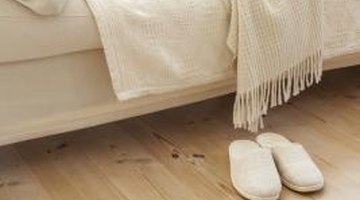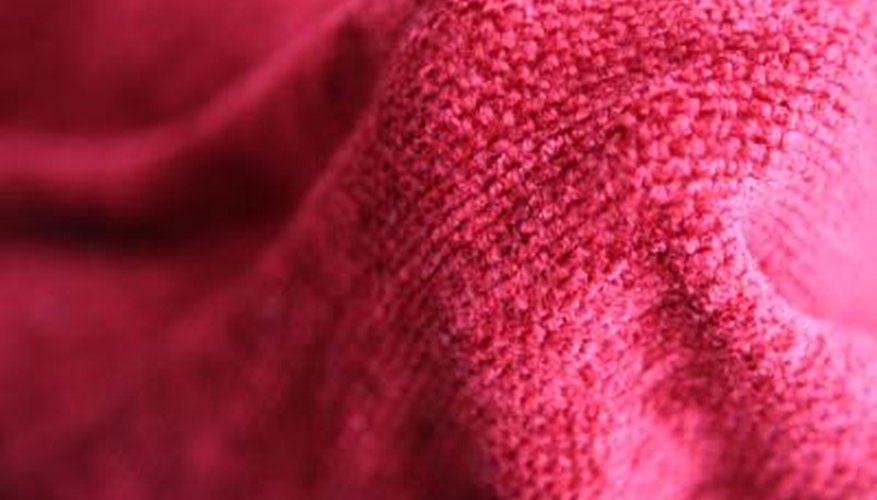Whether your chenille is a vintage bedspread, newer upholstery, clothing or a handmade piece, care must be taken when washing such material. During the 1800s, chenille bedspreads were created by hand using homespun yarn and cotton, but modern chenille fabric is manufactured using cotton and a polyester, rayon or acrylic blend of yarn. Sweaters, throws, winter hats and mittens are frequently made of chenille, as is upholstery fabric. The yarn that gives the fabric it's typical tufted texture is fragile, so chenille should only be washed by hand.
- Whether your chenille is a vintage bedspread, newer upholstery, clothing or a handmade piece, care must be taken when washing such material.
- During the 1800s, chenille bedspreads were created by hand using homespun yarn and cotton, but modern chenille fabric is manufactured using cotton and a polyester, rayon or acrylic blend of yarn.
Fill a sink or bathtub with enough warm water that you can submerge the chenille item. Add the soap flakes or mild detergent and stir the water by hand to distribute the soap.
Add the chenille bedspread, clothing or fabric to the water, making sure the entire piece is submerged, then swirl the fabric gently in the soapy water without overly agitating the fabric.
Allow the fabric to soak in the soapy water for about 20 minutes before draining the tub or sink.
- Allow the fabric to soak in the soapy water for about 20 minutes before draining the tub or sink.
Refill the sink or bathtub with more warm water, then work more soap out of the fabric by hand. Drain the water out of the tub or sink.
Fill the tub or sink again with cold water and add fabric conditioner according to the manufacturer's directions. Allow the chenille to soak in the conditioner for about 10 minutes.
Drain the water out of the sink or bathtub and refill with enough cold water to remove most of the fabric softener. Swirl the fabric around in the fresh water, then drain the tub or sink for 25 to 30 minutes before removing the chenille item.
Roll the drained chenille gently into a log shape while squeezing out excess water. Do not wring the material. Layer two large bath towels on a table or flat surface and then lay the chenille item flat on the towels to dry.
Dry chenille bedspreads in a dryer set on either the air fluff or delicate cycle.

Fill a bucket or container with warm water. Add mild detergent or soap flakes and stir it by hand to make sure the soap is dissolved.
Soak a clean white handtowel or washcloth in warm soapy water, wring it out, and gently dab any stains from the chenille upholstery without soaking the fabric.
- Roll the drained chenille gently into a log shape while squeezing out excess water.
- Soak a clean white handtowel or washcloth in warm soapy water, wring it out, and gently dab any stains from the chenille upholstery without soaking the fabric.
Lay a dry white towel or washcloth over the cleaned area of the upholstery and gently apply pressure by hand to absorb any excess water.
Gently brush the dry upholstery fabric with an infant's soft-bristled hair brush to fluff the fabric's nap. If stains remain, repeat the process.
TIP
Lightly used chenille items can be washed in cool or cold water.
WARNING
Do not dry dyed chenille in direct sunlight, as it will fade the fabric. Do not hang chenille fabric, clothing or bedspreads to dry, as it will separate the fibres.
